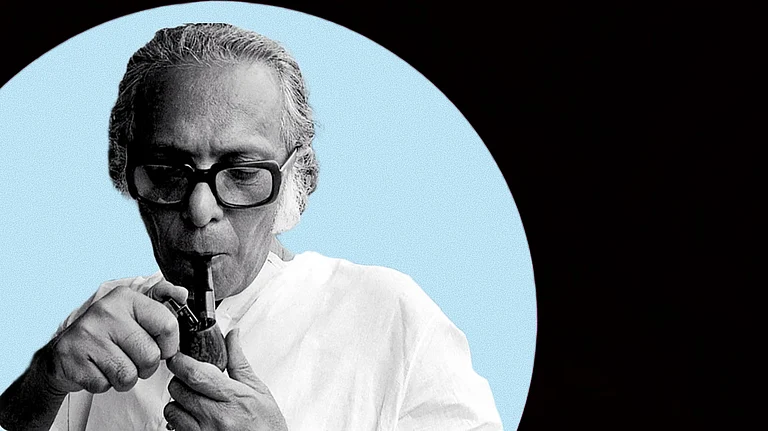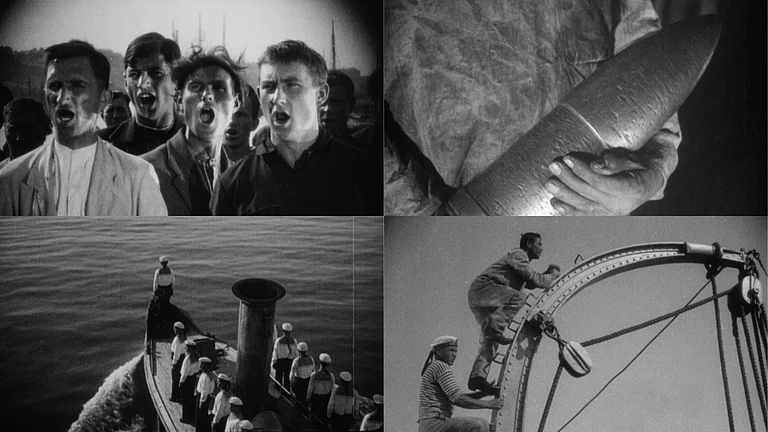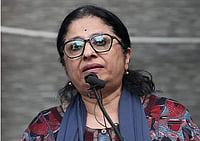Bhojpuri cinema has a large viewership not just in regions where Bhojpuri is spoken, but across India and even in other countries, such as Mauritius, Fiji, Surinam, Trinidad, and Tobago, etc. The most popular opinion about Bhojpuri cinema is that it is vulgar and explicit. Also, it objectifies the female body. In a society in which sexuality isn’t taboo and often expressed in cultural practices such as folk songs, why is it that people start consuming such content?
It is often seen that when the market enters into the domain of local cultures, it often revamps their productions and also redefines their relationship with people of that culture. Cinema is the most agreeable medium to do so. It doesn’t only redefine the meaning of the culture but also its engagement with other cultures. This also happens with the Bhojpuri cinema, where the market decides what to desire and how to desire through capitalising the cultural productions.
Bhojpuri is a vernacular language spoken largely in eastern Uttar Pradesh, western Bihar and some places in Jharkhand. However, the fact that there has been large-scale migration from this region to every metropolis of India for employment opportunities, Bhojpuri-speaking people are scattered across the country. This phenomenon makes nationwide viewership of a regional cinema. Historical trajectory of Bhojpuri cinema could be traced back to the 1963 film ‘Ganga Maiyya Tohe Piyari Chadhaibo’. However, till 2000, there were very few movies made in Bhojpuri and scholars were skeptic if it could exist much longer. But, after the grand success of ‘Saiyyan Hamar (2001)’, ‘Sasura Bada Paisawala (2004)’ and Panditji Batayi Na Biyah Kab Hoyi (2005)’, the future of Bhojpuri cinema totally changed from what was being speculated. Bhojpuri cinema, like most Hindi films of the 1990s, laces family dramas with a dash of comedy, action, romance, tragedy, and item songs. A good chunk of the budget is spent on songs since Bhojpuri songs have an even larger viewership that goes beyond the Bhojpuri-speaking public. Its audience comprises working-class people: rickshaw-pullers, daily wagers, etc, living in the metropolis. They are either people living in rural areas, who don’t want to be looked over with despise and scorn or with insignificance, or they are from those castes that have been politically mobilized in the last three decades, willing to subvert the social dynamics.
The rise of Bhojpuri cinema in the 21st century has many causes. After globalisation, Bombay cinema shifted towards a new ambitious middle-class, which aspired to shuttle between the metropolitan cities of the new world; i.e. New York, Chicago, Toronto. Rural India became a thing of the past not just in cinema, but also in economic and cultural spheres. This gave an avenue to the regional cinema. Another aspect was the rise of identity politics and the assertion of middle castes in the post-Mandal era.

Female Body And Sexuality As Site Of Contestation
The major discourses in Bhojpuri cinema centre around migration, tradition-modernity dichotomy, the emergence of middle castes and sexual anxieties, etc. All of these discourses are symbolized in the representation of the female body and its objectification. For instance, the popularity of explicit or vulgar content in songs is ascribed to sexual deprivation and the consequent anxiety. The migration does not only distort their sense of belongingness but also causes sexual anxieties. Migration’s effect on sexual anxiety can be seen significantly in Bhojpuri folks. ‘Bidesia’, a genre of theatrical performance, is a good example. In this art form, a woman urges a ‘batohiya’ (traveller) to remind her husband in the city, who has apparently forgotten her because of another woman in his life, to come and see her. In other folk songs such as Barahmasa, Kajri, etc, the sexual anxiety of those who are left behind finds expression in allegories. But this anxiety also holds true for those who have migrated. In the globalized world, large-scale migration has been normalized. The mass media enables them to have a virtual connection with what they are longing for: their home, a sense of belonging. This virtual connection makes them live at once in two space-time zones.
The female body is a kind of fantasy in Bhojpuri cinema, an axis for power contestation. In the blockbuster film ‘Nirahua Hindustani’, the ‘heroine’ happens to be an educated, modern, anglicized Hindi-speaking girl, wearing immodest clothes belonging to an upper caste/class ‘khandaan’ and has returned to the village from the city. The ‘hero’ is a villager, not quite educated, Bhojpuri-speaking masculine belonging to the lower caste/class. In search of his dream girl, he arrives in Mumbai, where he meets the girl. Having discovered that the boy is a naive villager, she plans to marry him to inherit her late father’s property, and later divorce him. She is scornful towards the village and looks at the boy with disdain. She wears western dresses until she falls for the boy. Then, she transforms into a Bhojpuri-speaking, polite girl, wearing modest dresses. This symbolizes the existential dread of the hero. The hero has a purposeless life until the girl herself becomes a purpose. In this narrative, the woman abandons modernity to embrace tradition and the man lives happily with his wife and family in the village and doesn’t migrate: it is a meta-utopia of every migrant. The Bhojpuri cinema is all about this meta-utopia. For this only, the ‘hero’ fights the entire world. The villain is always an upper caste/class local politician or sometimes the father/brother of the heroine, who disrupts this meta-utopia.
The cultural logic of global giants is to reach out at the doors of local cultures to perpetuate the market by creating the needs. In the case of Bhojpuri cinema, the widespread migration caused by Neo-liberal capitalism creates an urge for a sense of belonging and the catharsis of social anxiety. To tap into this urge, the market appropriates local cultural productions and creates a virtual sense of belongingness in cinema, leaving the audience in constant tension between ambivalence of virtual and real-world around them. This unending vicious cycle perpetuates the market. Explicit misogyny and vulgar content define Bhojpuri cinema because the market monopolizes its production, dictating it to those who consume them what to desire instead of giving them what they really desire.
(Nehal Ahmed is a doctoral student at the Academy of International Studies, Jamia Millia Islamia, New Delhi, and the author of ‘Nothing Will Be Forgotten’)























